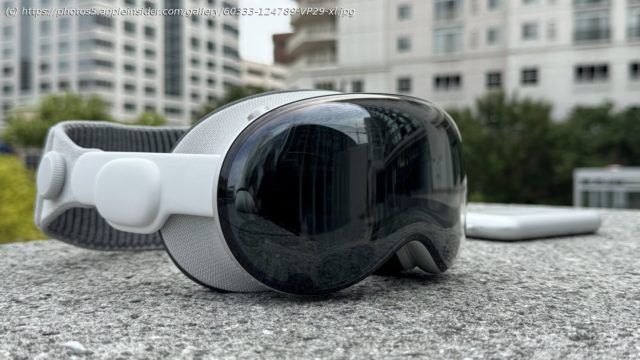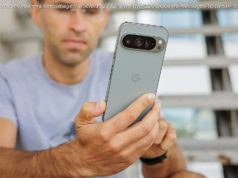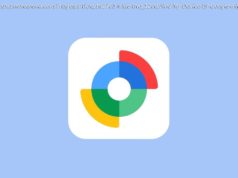After six months with Apple Vision Pro, things feel stuck. A glacial rollout of immersive content, a lack of native apps, and no word of Apple Intelligence make the $3,500 product harder to swallow.
Apple Vision Pro
After six months with Apple Vision Pro, things feel stuck. A glacial rollout of immersive content, a lack of native apps, and no word of Apple Intelligence make the $3,500 product harder to swallow.
Apple Vision Pro is frustrating.
It is also one of the coolest pieces of technology I’ve ever owned. It is beautifully crafted, the software can feel magical at times, and it makes using apps feel intuitive and whimsical the way iPad did when it launched in 2010.
Whimsy and novelty can only carry a product so far. As I shared in my one-month review, Apple Vision Pro needs evangelists at Apple pushing for more media, apps, and games that take advantage of the format.
Things are progressing but at a painfully slow pace. The issues I’ll mention here and in previous reviews are all related to being an early adopter.
There’s a good chance buyers in late 2025 and beyond won’t have these problems. The platform will be fine, eventually.
But, this review is about today, about six months into the product’s life.
Ask me about Apple Vision Pro, and I’ll say it’s an amazing product. It is an incredibly Apple vision of the future, but it’s still an early product and too immature for mainstream audiences.
Apple needs to move the needle forward on Apple Vision Pro. Or else, we risk seeing it fall to the background until something cheaper revives the lineup a few years from now — not dissimilar to what happened with the HomePod.
Previously on AppleInsider
If you read my one-month review, you’ll know I was hard on some of the shortcomings found in visionOS 1.0 and the lack of native experiences. Just two months after that was published, the new 13-inch iPad Pro with M4 arrived, again challenging me to think about my computing lifestyle.
I had to review that product by living in it as I did with Apple Vision Pro. The headset fell into the background for that first month of use, thanks to my renewed interest in the iPad platform.
While reviewing that product, I did lament not having as much time with Apple Vision Pro, but knew that might change after WWDC. I was right, to some extent, as visionOS 2 addressed many of my initial complaints. More on that soon.
From July to early August, the iPad Pro and Apple Vision Pro ended up living in tandem. I favored the iPad Pro for its amazing display and ability to transform into whatever computer I wanted, but Apple Vision Pro still had its place as the perfect focusing tool.
The March to August Apple Vision Pro timeline:
Things haven’t been quiet for the platform, but it seems developers, creators, and accessory makers are reluctant to support it. Prominent developers have stated that the time and effort in creating native experiences aren’t generating a return on investment.
I still love Apple Vision Pro for its ability to transport me to another place, pile windows around me, and make me feel like I’m truly interacting with software. It’s the same new and whimsical feeling I had previously felt when using iPad as my main computer.
That said, Apple is stuck in a novelty quagmire of its own design. The lack of developer and creator support on the platform is still a problem six months later, and that’s going to be a big problem for the longevity of the product.
Let’s look at the good and bad of these past few months. I believe there’s still a lot of potential for Apple Vision Pro and the visionOS platform, but only if Apple is willing to show more commitment than it is today.
visionOS 2 makes Apple Vision Pro more compelling
The biggest news for Apple Vision Pro in these past six months has to be visionOS 2. The new operating system version was revealed just four months after the product released, and already it showed Apple is listening to customer feedback.
Many of the problems I encountered from visionOS 1 have been fixed. The Home View and Control Center can be summoned with new gestures that don’t require rolling your eyes into the back of your head for a start.
Look at your palm and a dot appears, click that and it opens the Home View. Look at your palm then flip it over to view the clock, battery, and volume. Grab that and slide to adjust volume, or tap it to open the Control Center. Much better.
Apple’s Magic Keyboard (on sale now) and the keyboard of a MacBook being used for Virtual Display will cut through immersive environments. Sadly, this feature doesn’t work with non-Apple keyboards, and it doesn’t seem likely to be a feature anytime soon.
Of course, this is all still in beta and won’t be available to the public until launch. Curiously, Apple didn’t provide a public beta for visionOS 2, but that’s likely because everyone willing to buy Apple Vision Pro and use visionOS 2 is likely already part of the developer program.
The most eye-popping feature of visionOS 2 has to be the 2D photo conversion. The Photos app can take any photo and convert it to 3D, and it is an excellent effect.
New APIs and updates to tracking will make building apps and games for Apple Vision Pro better. Of course, developers will have to actually build for the headset for that to matter.
There’s more to visionOS 2, like improved Personas and an ultra-wide virtual Mac display view, but those features aren’t in the beta or at least not finalized. It is clear visionOS 2 is a step in the right direction and shows Apple’s commitment to improving Apple Vision Pro despite its low volume of sales.
Your mileage will vary, because ours does
This is where I slip into the royal « we » for a bit.
Mike Wuerthele, our Managing Editor here at AppleInsider, is virtually over my shoulder for all of this, which is why he’s also credited on this piece. While this review focuses on me, I’d be incredibly remiss if I didn’t bring up his points, for a different viewpoint about the product.
He’s continued to talk to his friends in enterprise, Fortune 500, and the government. There are high hopes, but things aren’t changing there either.
He had an opportunity to test a pre-release version of the hardware with one of his friends, and then again with more people after release. Both the early previews and the adoptions after release were more about the promise rather than what state of the hardware and software combo actually got delivered.
Pricing remains an issue in big business. There are still no high-volume sales discounts worth a damn, which is a problem for most of the buyers.
Shared profiles still don’t exist in any meaningful way, and at this point, that’s an intentional omission. Yes, we understand that this is because Apple says that it is a personal device, and sells one set of literal software for the facial fit, but this is not a hard obstacle to overcome when the alternative is $3500 per user.
Some kind of shared device system needs to exist, we’ve been told by literally every representative of enterprise, government, or trade work we spoke to. And, they’re incredibly disappointed that this didn’t roll out in visionOS 2.0.
Apple did fix Travel Mode on the train. Without delving into details, we can confirm that it works in visionOS 2.0.
We have seen some interesting solutions to a problem that we pointed out before — a hard hat brim periodically can make contact with the Digital Crown, really screwing up the user experience.
One of the enterprises we talked to has engineered a simple, ugly, and practical solution. They have placed sticky electronics device feet that are taller than that crown on the left and right side of the Digital Crown.
So, when the user shifts position, or the hard hat shifts, there’s no contact with that crown.
And, given the inherent nature of the pass-through video that hasn’t changed one iota and won’t until another headset is released, it’s nearly impossible to do anything precise with it. The pass-through cameras are excellent compared to the competition, but depth while wearing it is not mapped one-to-one versus with it off and is distorted some when you’re not perfectly centered.
There’s no solution for this, no clever work-around.
And, since then, there’s been more attempts at user training in businesses that we’ve spoken to. There is no one generation that seems more willing to use the headset, no one trade that finds it more acceptable than another.
But, even that acceptability is of limited use. Developers for these enterprises are ham-strung by restrictions not just in hardware, but also in software too.
The potential is there. It just seems like Apple doesn’t want to have anything to do with enabling that potential.






